Pest Identification Guide
As the old saying goes, "knowing your enemy is half the battle". This is why we have put together this handy pest identification guide. Not only does it help you to know what unwanted visitors you have in your home, it's also helpful for us to know before our consultation, so that we can spend less time on diagnosis and more time on the treatment.
We've listed a few of the most common pest species below; however, if you have any further questions, please simply contact us via 07807 429 843 to discuss your situation.
Rodents

Black Rat
Also known as a Ship rat, it's the smaller of our two rat species in the UK. Although they are currently listed as an endangered animal, they were the exact same species which was (incorrectly) blamed for bringing the Black Death across Europe in the 13th Century before being ursurped by their brown cousins in the 18th Century. They have dark, smooth fur and a more slender body shape, measuring from 14-23cm from head to tail.
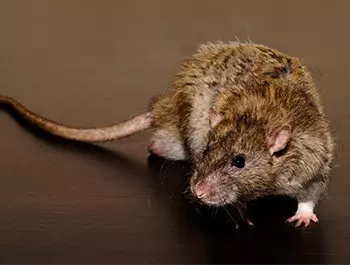
Brown Rat
The Brown rat was introduced from our shores in the 18th Century, and has thrived ever since. There is no mistaking a Brown rat as they are much larger than their naval cousins, measuring 23cm excluding the tail. They have a blunted muzzle and are capable of causing serious damage to structure and content of residential and commercial properties, as well as known for carrying dangerous diseases.
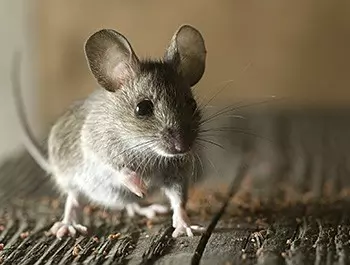
House Mice
The most abundant of our rodent species in the UK, the House mice is an adaptable, resilient and capable of rapid breeding due to being a prominent prey species. They have large rounded ears, big eyes and a rounded nose, as well as uniformly brown-grey fur. Contrary to popular belief, their favourite food is not cheese, but cereal and nuts; though they are not picky eaters and will help themselves to anything they can get their paws on.
Insects
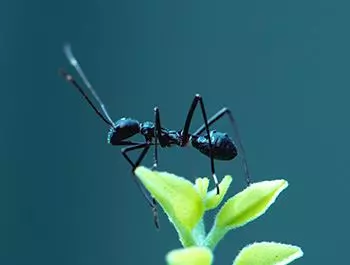
Ants
Black ants, or Garden Ants, are the most common species of household ants in the UK. You can spot them by their distinct food transportation lines along garden paths and unfortunately sometimes, your kitchen floor. They are attracted to leftover food substances, particularly the smell of sugar so be sure to clean up any spills and crumbs promptly. Finding an ant nest is relatively easy; simply follow the line of ants.
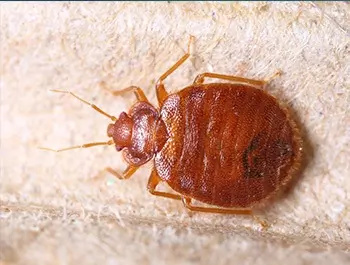
Bedbugs
Begbugs are small, brown oval insects who don't have the best bed-sharing etiquette. They have elongated beaks which they use to feed on human blood at night, so if you have repeatedly woken up to small bites on exposed skin which wasn't there before, it may be worth calling a professional to diagnose the situation. Although the bites can be itchy and generally unpleasant, they are not known to carry any diseases.

Fleas
If you have pets in your home, you are more likely to have fleas in your home, though pet-free households are not immune to these blood-sucking parasites. They are roughly 2mm long and highly mobile, with a pair of long hind legs to propel them a distance of 15 times their own body length. Flea management is not simply killing the adults; you should also eliminate any eggs which are easily hidden in bedding, carpets and rugs.
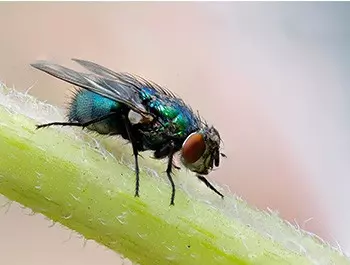
Flies
Most prolific in warmer weather, flies are one of the most common household pests in the UK. An unmistakable insect around 8mm long, with a pair of signature red compound eyes. Breeding from maggots on rotten meat, they are responsible for transmitting a range of bacterial diseases such as typhoid fever, food poisoning and conjunctivitis. They are amongst the most disruptive pests, especially to commercial businesses.
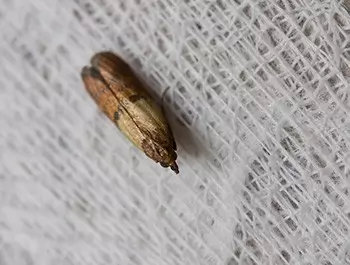
Moths
Though we usually celebrate and actively conserve our diverse moth species, Cloth moths can be a nuisance in the household and retail businesses as they can potentially cause costly damage to clothing garments as well as pillows, bedding and anything made from natural fabric. Adults are roughly 1cm in length, laying up to 50 undetectable eggs in the creases of stored garments, which their larvae will feed on.
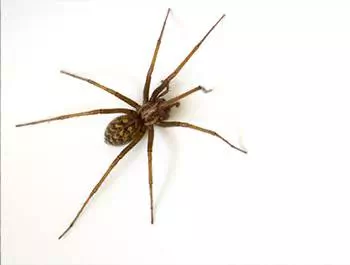
Spiders
Some of us are firm believers of not killing spiders, but this can change quickly when you discover that a female House Spider has given birth to over 250 healthy spiderlings in your kitchen cupboard. House spiders are one of the most common species of spiders you will see in your house, growing up to 12cm wide. Daddy-longlegs, or Harvestmens, can be identified by their long legs and small, segmented round body.
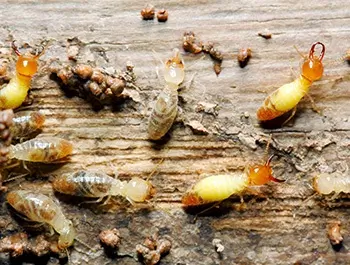
Termites
Although very rare in the UK, these wood-munching insects closely resemble a white ant of about 7-8mm in length. They actually belong to the same order as cockroaches, and are known for causing devastating damage to timber structures. They are extremely good at being hidden and you may only notice their presence when the structure fails. If you suspect you may have termites, it's important that you call a professional immediately.
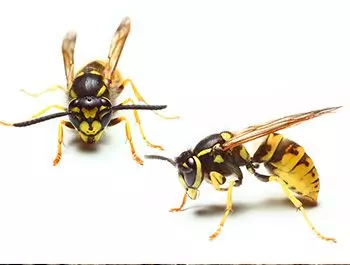
Wasps
Wasps are characteristically distinctive, somewhat resembling a larger, slimmer, hairless and very, very angry bee. The queens establish a colony around spring/early summer, similar to the bee breeding cycle. They are extremely territorial and unlike bees, wasps can sting multiple times when they believe their nest/queen is under threat, which can be problematic when they nest in, or close to our homes.

Woodworms
You may be surprised to know that woodworms doesn't refer to a specific species, rather a group of beetle larvae which eats wood. If you see small round holes roughly 1mm in diameter on wooden furniture and beams, check around for other symptoms, such as a layer of fine dust around the opening. They can be treated relatively quickly, though are prone to return if the wood remains damp.
Mammals
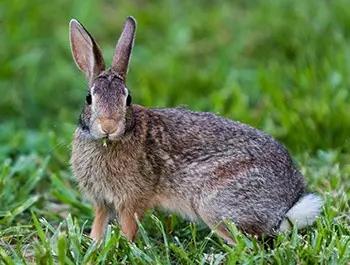
European Rabbit
Regardless of how cute they look, our most abundant species of rabbit was initially introduced to be farmed for food, though it was deemed a pointless exercise after a few escaped and thrived in our countryside. A single female (doe) can produce up to 100 babies (kits) per year, causing devastating damage to farmers crops and prized gardens by grazing on just about everything and digging burrows under the landscape.

Common Moles
It's not difficult to identify a mole; they are subterranean creatures which are round in shape, with a pointy nose and front facing paws and long claws for digging through dirt. Though they spend most of their life underground, you can definitely spot their trail by a signature range of mini volcano-like mounds on the grass, known as mole hills. Left unchecked, they can cause havoc to a garden, turning up soil and ruining flowerbeds.
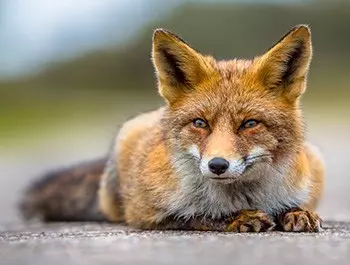
Red Fox
The Red fox is our only species of fox in the UK, typically identified by their iconic fiery fur, bushy tail, large ears and canine features. An adult fox can grow up to the size of a medium dog. Extremely adaptable and intelligent, they are most active at night; some of us encourage them by leaving food in the garden, but they can unfortunately cause a nuisance when you have smaller outdoor pets such as chickens, rabbits and guinea pigs.
Birds

Feral Pigeon
Descended from cliff-nesting Rock doves, the now Feral pigeon is commonly seen in towns and cities throughout the UK, living closely to humans and foraging on our scraps. They are mostly pale grey with a iridescent chest, though there are many colour variations such as white, piebald or even ginger.
They are social birds and if a pair has nested on your home, you're more than likely to find the whole flock moving in sooner or later. They often require multi-sided approaches to effectively deter from nesting, such as playing tape of predator's calls and installing spikes.


Gulls
As that pedantic birder friend will be eager to point out, there is no such species as a "Seagull". The most common species of gull we see on our waters are Herring gulls (large robust gull with pale grey backs), Lesser black-backed gulls (similar size to a Herring gull, with a darker-coloured back) and Black-headed gulls (who only wear their brown hoods for 3 months a year). You can often hear these large seabirds before you see them, characterised by their "laughing" call. Unfortunately, due to habitat loss and the development of seaside towns and resorts, they are often seen fighting for scraps on our streets, sometimes snatching food out of tourist's hands.
Are you looking for pest control services in Stevenage and the surrounding areas of Hertfordshire? We offer pest management throughout Stevenage, Leighton Buzzard, Luton, St Albans, Hemel Hempstead, Hertford, Hitchin, Bedford, Hertfordshire.
Call 07807 429 843 to discuss a pest infestation on your property.
